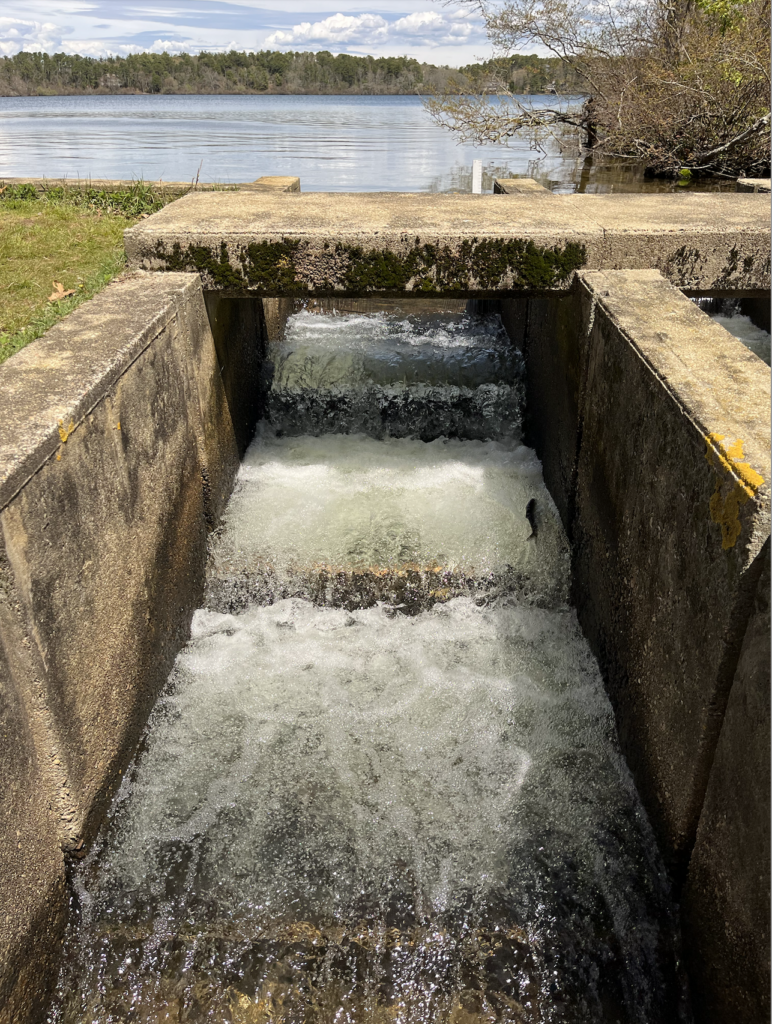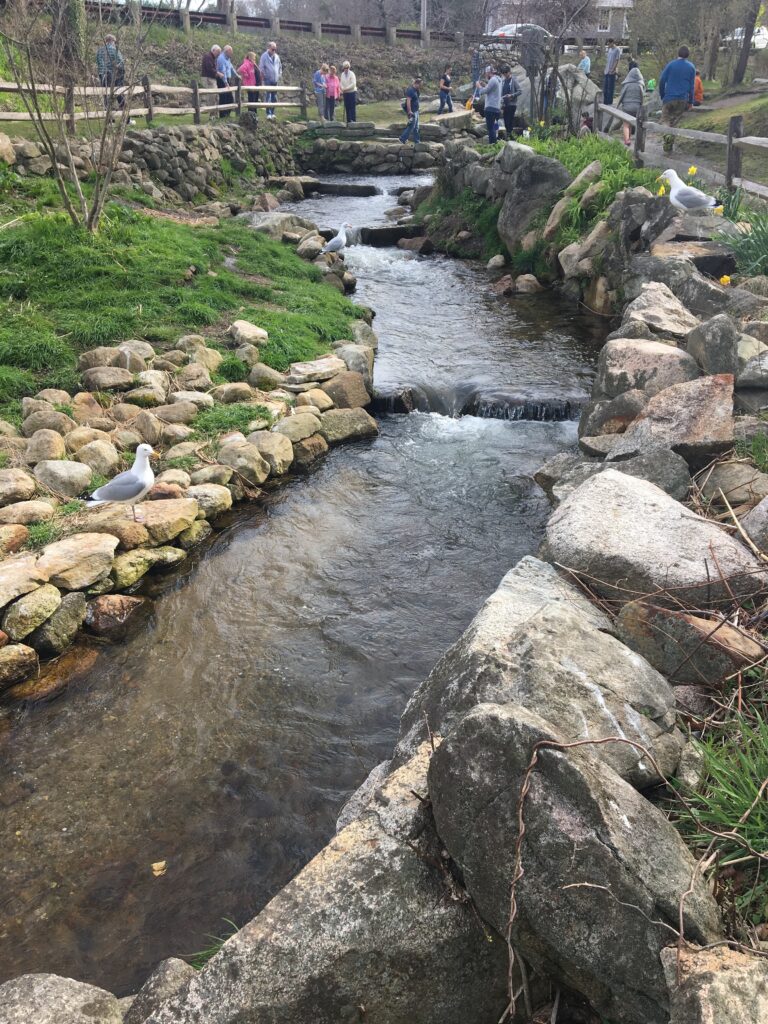The Importance of Herring Runs: Protecting Biodiversity on Cape Cod
Every year, in the springtime, an incredible natural phenomenon takes place on Cape Cod in Massachusetts. It’s known as the “Herring Run” – a spectacular migration of river herring that travel from the ocean to freshwater ponds and streams to spawn. This annual event is a vital part of the ecosystem, with the herring serving as a keystone species that supports the food chain for other marine life. Unfortunately, the herring population has been on the decline since the late 1990s, with several factors, including climate change, contributing to the issue. We’ll be exploring the environmental benefits of herring and why it’s crucial for biodiversity in our ecosystem. We’ll also share the challenges facing the herring population and discuss how local conservation efforts have helped to protect this remarkable species.

The Importance of Herring
While herring may be at the bottom of the food chain, they play a critical role in supporting the entire ecosystem. As herring migrate upstream and spawn in freshwater ponds, the same freshwater pond where they were born, they serve as a source of food for larger fish and animals, such as striped bass and ospreys. Similar to traveling upstream, the trip back to the oceans is not easy either. Natural predators are a principal reason why less than 1% of young herring make it back to the sea from their spawning grounds. While being at the bottom of the food chain, herring do play the important role of keystone species, meaning their health and well-being reflects the overall state of the coastal ecosystem. Larger animals that eat the herring help to support other species and so on up the food chain. As we continue to study the health of our ecosystems, herring populations declines could indicate larger issues with the ecosystem that could have a cascading effect on other species, making them an indicator species.
By highlighting these interconnections and dependencies, we can demonstrate how the preservation and protection of herring and their habitat is crucial to maintaining a healthy and thriving ecosystem. We can also underscore the importance of taking a holistic approach to conservation efforts, one that recognizes the value of preserving and protecting all species and their habitats.
Declining Herring
Climate change is a significant factor that is affecting the herring run and the broader ecosystem. As we have seen in the Gulf of Maine with our lobster populations, rising water temperatures could have a profound impact on the herring populations and their migration patterns. As the water temperature rises, it could affect the timing and location of the herring run, potentially causing them to spawn earlier or later than usual, or in different locations. This could disrupt the natural cycle of the ecosystem, affecting not just herring, but other species that rely on them as a food source. The herring runs start when the water temperature reaches 50 degrees which, historically, has fallen in mid-April to mid-May in Cape Cod. It is important to consider the impacts climate change is having on the broader ecosystem, and the herring run in particular, when communities are developing conservation and management strategies. The herring run is not only important for the conservation of herring populations, but also for maintaining the health and diversity of the entire ecosystem.
Other major factors to the decline of herring includes the loss of habitat due to human activities, such as urban development, deforestation, and agriculture. These activities have altered the natural landscape and waterways, resulting in the loss or degradation of critical spawning and nursery habitat for herring. Pollution is also a significant factor that contributes to the decline in herring populations. Water pollution, including excess nutrients, heavy metals, and chemicals, can negatively affect the health and survival of herring, and also reduce the quality of their habitat. Pollution can also contribute to harmful algal blooms that deplete the oxygen levels in the water, leading to fish kills and the loss of habitat. Overfishing and bycatch in commercial fisheries are another factor contributing to the decline. The use of large nets in commercial fishing operations can result in the unintentional capture of herring and other non-target species, which leads to their death or injury.
Climate change exacerbates these issues by intensifying the effects of habitat loss, pollution, and overfishing. Therefore, it is critical to address these multiple stressors simultaneously to protect and conserve herring populations and the broader ecosystem.
Local Efforts to Save Herring
One shining example of local efforts to protect and restore the herring population is the Brewster Herring Run Restoration Project. This initiative, led by a group of dedicated local volunteers, seeks to restore the natural habitats of the herring and promote their safe migration upstream.
Over the years, the project has made remarkable progress in restoring the herring run to its natural state. By removing dams and other barriers to fish passage, cleaning up waterways, and planting native vegetation, the group has helped to improve water quality and create a more hospitable environment for the herring to thrive. As a result of their efforts, the number of herring making their way upstream has increased significantly.
But the benefits of this project go beyond just the herring population. It has also brought the community together in a shared effort to protect the environment and preserve the natural beauty of the area. Volunteers from all walks of life have come together to work on the project, forging new connections and creating a sense of place that is invaluable to the community.
Getting involved in local conservation efforts can be a powerful way to make a positive impact on the environment and the community. By working together to protect the natural world around us, we can help to preserve our shared heritage and create a more sustainable future. The Brewster Herring Run Restoration Project is just one example of how local efforts can make a big difference in the world around us. By getting involved in similar initiatives in your own community, you too can help to create a better world for generations to come.

Herring’s Place in History
The herring run played an important role in the history of many towns in New England. In the past, towns would count on the annual spring migration to harvest fish for sale and food. Today, the herring run is still an important cultural and historical symbol for many communities in the region. People in the community look forward to this event every year and many travel from all over to watch it take place.
Native Americans have a long history of harvesting herring for food and utilizing them for a variety of purposes. In fact, the Wampanoag tribe, who have lived on Cape Cod for thousands of years, used to rely on the annual herring run as a vital food source.
By understanding the history and cultural significance of the herring run, we can gain a deeper appreciation for the importance of protecting and preserving these vital ecosystems. By working together to restore the natural habitats of the herring, we can not only help to ensure their survival but also honor the important role they have played in the history and culture of the region for thousands of years.
Herring Vs Seagulls
Seagulls play an important role in the herring run ecosystem as natural predators of the herring. As the herring swim upstream to their spawning grounds, many of them fall prey to hungry seagulls waiting for their next meal. While this may seem like a negative aspect of the herring run, it is actually a vital part of the natural cycle of life.
It is important to note, however, that while seagulls and other predators play a natural role in the herring run ecosystem, human actions such as overfishing, pollution, and the construction of dams and barriers to fish passage can have a negative impact on the herring population. By working to restore and protect the natural habitats of the herring, we can help to ensure the survival of these important fish and the many species that depend on them for food and survival.
Conclusion
The annual herring run on Cape Cod is a natural wonder that showcases the importance of herring for the biodiversity and balance of our ecosystems. From the seagulls that rely on them for food to the larger fish and animals that depend on them for survival, the herring is a keystone species that reflects the overall health of our coastal ecosystem.
However, the herring population is declining due to human actions such as overfishing, pollution, and the construction of barriers to fish passage. This is where local conservation efforts, such as the Brewster Herring Run Restoration Project, play a critical role. By restoring and protecting the natural habitats of the herring, we can help to ensure the survival of these important fish and the many species that depend on them.
In addition to the environmental benefits, getting involved in local conservation efforts can also provide a sense of community and connection to the natural world. So, get out there and explore the cool and essential things happening in your own backyard, and join in the efforts to protect our planet for future generations.
To our community of business being Responsibly Different™ we have some resources that we hope keep you learning and growing:
Why is Corporate Responsibly in high demand, we wrote a blog post about that called B Responsibly Different™
To learn more about Carbon Offsetting, read our blog post about “Understanding GHGs Scope 1,2, & 3”
To learn more about what Dirigo Collective is doing, listen to our podcast episode with 1% for the Planet
—————————————————————————————————
Researched and written by Brittany Angelo, outline assistance by ChatGPT
Photographs by Brittany Angelo
May 11, 2023
